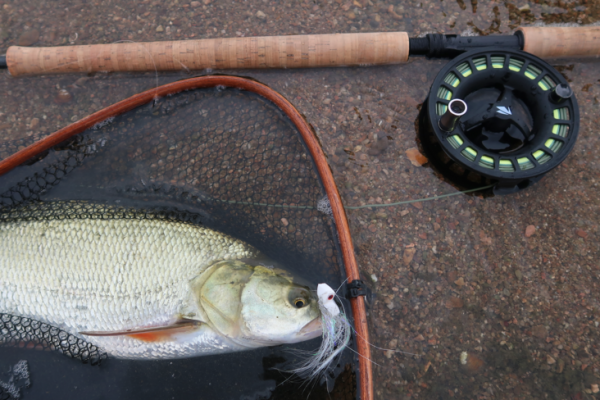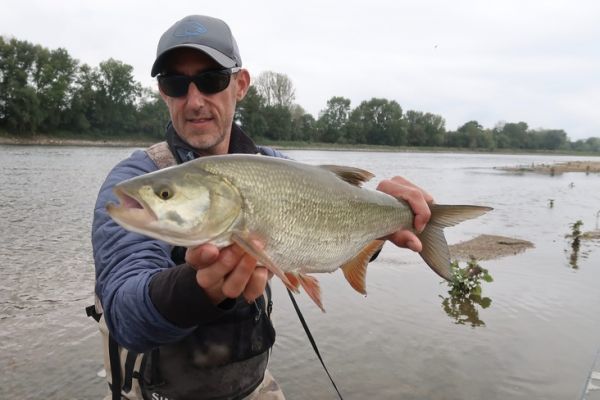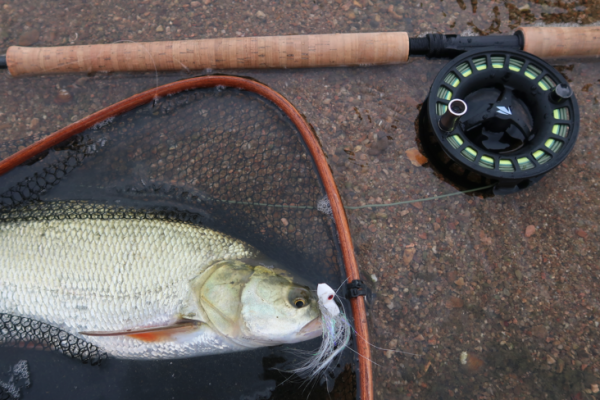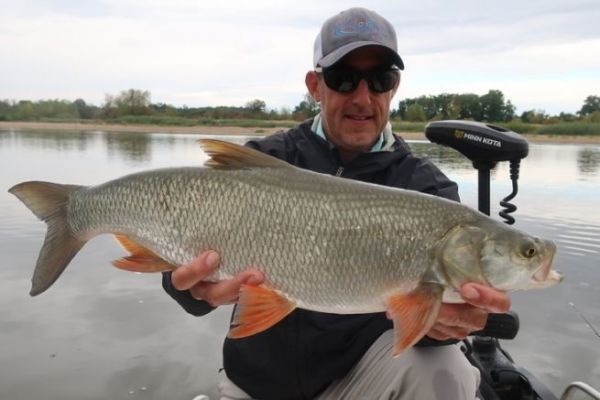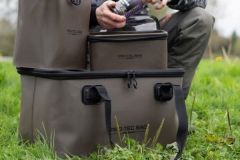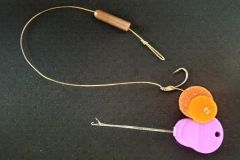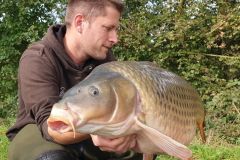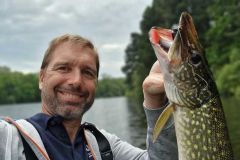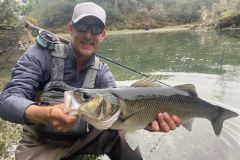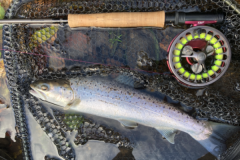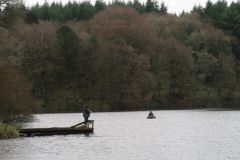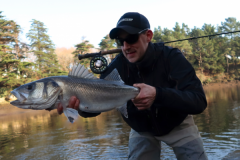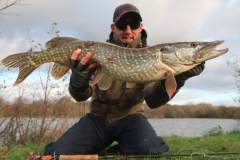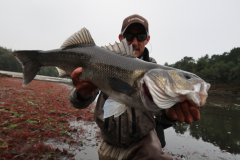Aspe fishing
The average size of asp should be around 60 cm, but you can regularly catch fish between 50 and 70 cm or even more. Species over 80 cm are quite common, especially on large rivers.
It's an aggressive fish that makes very nice bites, but the fights are quite short, even if the first moments are powerful and intense.
Asp need to cover a lot of ground to find active fish. For this reason, power fishing is used for prospecting. The angler needs to cast far and bring back his fly fast to find this particular and rather moody predator.
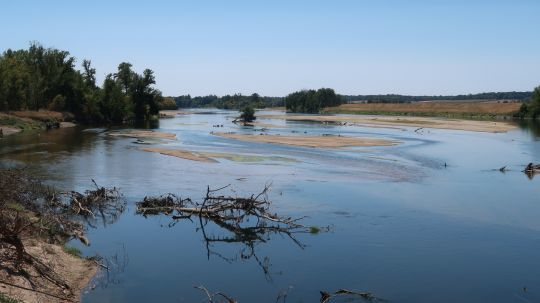
What equipment should you use to fly fish for asp?
In my humble opinion, there are two ways to equip yourself:
An all-purpose 9-foot rod with 7 to 8 sections for casting from shore or boat. Sea-typical rods are ideal, as they are fast-acting and offer good power for searching for asp. A tank rod can also do the trick.
Another solution I've opted for on long rivers is the two-handed spey rod. A 13 or 14 foot 8 or 9 line equipped with a shooting head is well suited to casting fast and far. If you're a good two-handed caster and you're fishing slightly narrower spots, you can switch to a 12-foot 7-grain switch rod, as asp flies are small to medium-sized.
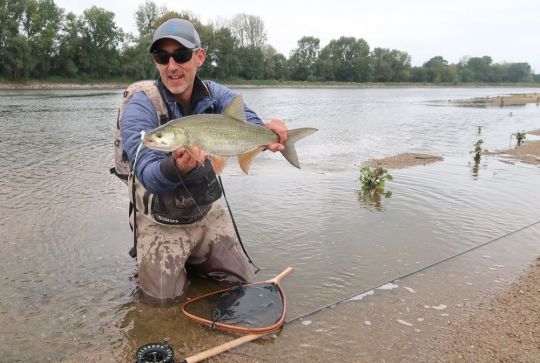
Having these two pieces of equipment will enable the angler to cover all areas and fish efficiently for asp in the river.
You will also need to provide :
3 m leader or rat tail (self-made or purchased like Rio leaders) approx. with 26° to 35° tip added at the end.
A selection of flies for asps if you're tying them yourself. There are no asp-specific flies on the market at the moment. Some bar flies also work quite well.
Polarized glasses are useful for tracking and protecting your eyes, as are a throwing basket is a very practical tool.
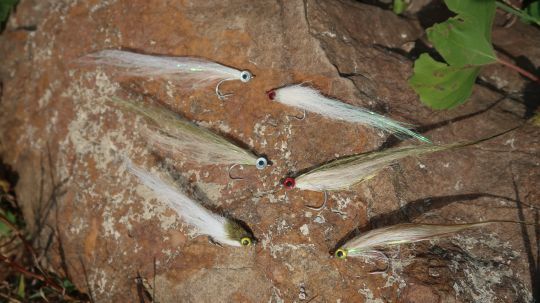
Shore fishing techniques
It is possible to catch asps on the fly from shore, but with a one-handed rod, casting distances remain limited and over a fishing session lasting several hours, it can be quite exhausting! However, it's entirely possible, and some spots lend themselves very well to it.
Staying with the idea of fast prospecting fishing, rather than static, precision fishing, on rivers like the Rhine and Loire, a Spey rod offers many advantages as explained above.
Asp feed a lot on the surface. They're mainly looking for small fish, so we're going to offer them small streamers (5 to 10 cm) close to the surface, but also on the surface.
In this case, a floating line with a rod-length leader is ideal. It can be extended in clear water or on trained fish.
A 26° to 30° point, even 35° on some congested corners, completes the assembly.
These are fish that hunt by accelerating behind fast prey, often bleak, small spirlins and other white fish. You'll need to animate your flies very quickly, using fast, long strips. In faster currents, inert drift fishing may also work, especially on coveted spots. Sometimes, different approaches can create surprise and make all the difference.
It's also possible to raise them to the surface, which adds a lot of sensations, as their touches are brutal and explosive. It's always great fun!
Small gurglers are my favorite, in white, white/silver or green back, which we bring in short, dry shots to attract the attention of marauding asps. Don't hesitate to try small poppers in the same colors.
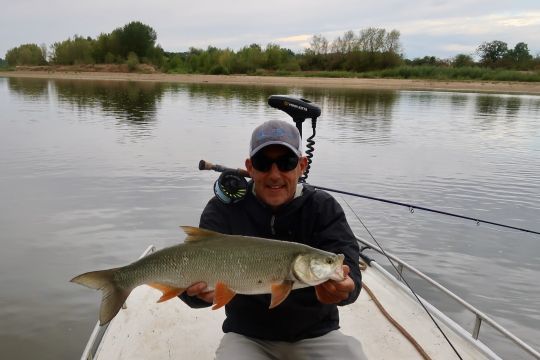
Fishing from a boat offers many advantages
A boat offers many advantages, especially for fly fishermen whose casts are shorter than those for lures.
It allows you to move quickly around corners, but also to get a little closer to the posts.
The angler is also above water level, which makes casting much easier and saves both comfort and distance.
A 9-foot single-handed rod with a 7 or 8 silk tip is ideal (see above for specifications)

 /
/ 